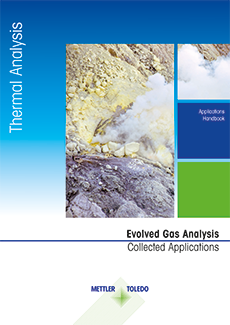Thermogravimetry and Gas Analysis, Part 4: TGA-GC/MS
A thermogravimetric analyzer coupled to a suitable Evolved Gas Analysis (EGA) system allows qualitative information to be obtained about the gaseous reaction or decomposition products formed in a TGA experiment in addition to purely quantitative information about mass changes. In Part 4 of this series, we discuss the combination of a TGA with a gas chromatograph/mass spectrometer (GC/MS) system.
Introduction
In thermogravimetric analysis, the mass of a sample is measured as a function of temperature. Changes in mass of just a few micrograms can be detected with high accuracy but no information is obtained about the identity of the gaseous products evolved during the mass change.
The information can however be obtained by coupling the TGA to a suitable system for gas analysis. The combination of a TGA with an infrared spectrometer or a mass spectrometer has been discussed in previous articles [1, 2].
The disadvantage of these two techniques is that gaseous compounds simultaneously evolved are measured as mixtures of gases at the same time. This makes the interpretation of the measured spectra more difficult. In fact, FTIR and MS are mainly used when the composition of the decomposition gases is dominated by just a few gases and the other decomposition gases only occur at low concentrations. If the composition of the decomposition gases consists of a large number of different gases, then the combination of a TGA with a GC/MS or a Micro GC/(MS) is recommended. In this article, we discuss the setup of a TGA-GC/MS system and show how TGA-GC/MS analyses are performed using polyamide 66 (PA 66) as an example. The coupling of a TGA to a Micro GC/(MS) will be described in a separate article.
Thermogravimetry and gas analysis, Part 4: TGA-GC/MS | Thermal Analysis Application No. UC 481 | Application published in METTLER TOLEDO Thermal Analysis UserCom 48








